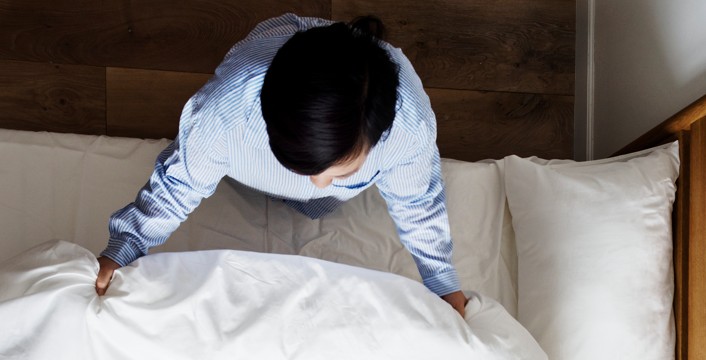Why you shouldn’t make your bed right away, and what science says about it

Making your bed too soon after getting up could be creating a cosy haven not just for you, but for millions of microscopic organisms, specifically, dust mites.
For years, making your bed immediately after waking has been regarded as a key sign of discipline and a successful morning routine, often promoted in military manuals and motivational speeches as the first step to “win the day.”
But emerging research and health experts are urging a second look, and it turns out, this age-old habit may not be as hygienic as we thought.
More To Read
- Forgotten hygiene: Handwashing struggles in Nairobi slums as Covid protocols fade
- From hygiene to safety: Why showering without slippers is a habit to break
- Nairobi residents raise concerns as bedbugs and cockroaches infest matatus
- Why eating with your hands feels better
- Mpox cases rise to 36 across Kenya as Nakuru County emerges as hotspot
- Hygiene promotion campaign seeks to prevent cholera outbreak in Marsabit
In fact, making your bed too soon after getting up could be creating a cosy haven not just for you, but for millions of microscopic organisms, specifically, dust mites.
The unseen residents in your bed
Dust mites are tiny, spider-like creatures that thrive in warm, humid environments and feed on dead skin cells shed during sleep, which is why unwashed bedding can become dark, dirty, and unhygienic over time.
While invisible to the naked eye, these tiny creatures can trigger allergic reactions, worsen asthma, and contribute to poor indoor air quality.
Research published in the Experimental and Applied Acarology journal shows that an average bed can harbour up to 1.5 million dust mites, which thrive in the folds of blankets, sheets, and mattresses, especially when the bed is made immediately after waking, trapping heat and moisture.
“We sweat and shed skin throughout the night. When you make your bed right away, you are essentially sealing in that warmth and humidity, the perfect environment for mites to breed,” says Dr Lydia Kamau, a Nairobi-based pulmonologist.
What science suggests
A 2005 study from Kingston University in the UK found that leaving your bed unmade can reduce dust mites, a practice reflected in boarding schools, where students often air out their mattresses on weekends.
Growing up in Kenyan schools, we were taught that airing bedding was part of cleanliness, though many of us came to take it for granted as adults. That is because an unmade bed allows moisture to evaporate more easily, making it a less hospitable environment for these pests.
Stephen Pretlove, the lead researcher on the study, explained why dust mites love such an environment.
“We know that mites can only survive by taking in water from the atmosphere using small glands on the outside of their body. Something as simple as leaving a bed unmade during the day can remove moisture from the sheets and mattress so the mites will dehydrate and eventually die.”
In short, letting your bed breathe for a while, be it twice a week or every day, ideally for an hour or two, allows air circulation to dry out the dampness from your body heat and sweat, making it less comfortable for mites.
In fact, that is why you always find a certain smell from the mattress, because while dust mites themselves do not smell, the damp, warm conditions that allow them to thrive can cause musty odours over time, especially if the mattress is not aired or cleaned regularly.
Health implications
Dust mite allergens can cause sneezing, itchy eyes, runny noses, and even trigger asthma attacks.
According to the American Lung Association, maintaining a dry sleeping environment is key to keeping their population under control.
“People with allergies or respiratory issues should be especially cautious,” says Dr Kamau.
Simple changes, like delaying bed-making, washing sheets weekly in hot water, and using allergen-proof covers, can significantly improve your health, and occasionally airing out your bed should be seen as a smart health choice, not a bad habit.
So, should you stop making your bed?
Not necessarily. The key is not to abandon the habit altogether, but rather to delay it.
• Open your windows in the morning to increase air circulation.
• Wait at least 30 minutes (ideally up to an hour) before making the bed.
• Pull back the sheets to let your mattress and bedding air out.
• Use breathable bed linen made of cotton or linen to aid in evaporation.
• It is a simple, scientifically backed step toward a healthier sleep environment.
• Give your bed a little breather; your lungs might thank you.
Top Stories Today










































